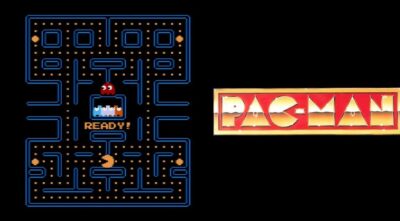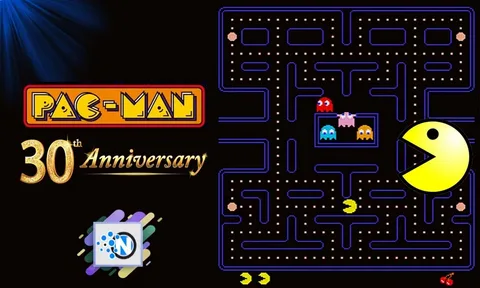In 2010, the world of video gaming commemorated a significant milestone—the 30th anniversary of Pac-Man, one of the most enduring and influential arca
In 2010, the world of video gaming commemorated a significant milestone—the 30th anniversary of Pac-Man, one of the most enduring and influential arcade games ever made. Since its release in 1980, Pac-Man has become synonymous with classic gaming, known and loved by millions across the globe. This anniversary was not just a celebration of a game, but a tribute to an icon that helped shape gaming culture and paved the way for future innovations.
This article dives deep into the history of Pac-Man, the celebrations surrounding its pacman 30th anniversary, and why this simple maze game continues to hold a special place in the hearts of players worldwide. We’ll also answer frequently asked questions to give you a comprehensive understanding of this landmark moment in gaming history.
Must visit: trustedhealthcare

The Origins of Pac-Man: A Game-Changer in the Arcade Era
The story of Pac-Man begins with Toru Iwatani, a young game designer working at Namco in the late 1970s. His goal was to create a game that appealed beyond the usual demographics of arcade players, particularly women. He drew inspiration from a pizza with a missing slice, designing a yellow circular character to navigate a maze, eat dots, and avoid ghosts.
Pac-Man was released in Japan in May 1980, followed by a North American release in October 1980 through Midway. The game immediately distinguished itself from the prevalent shoot-em-ups and sports games of the era by focusing on strategy, evasion, and non-violent gameplay.
What Made Pac-Man So Special?
Several features set Pac-Man apart, contributing to its success and longevity:
- Iconic Characters: Pac-Man himself, alongside the four distinct ghosts—Blinky, Pinky, Inky, and Clyde—offered personality and charm.
- Simple but Strategic Gameplay: The maze design and ghost AI provided challenge and replayability.
- Wide Audience Appeal: The game attracted players of all ages and genders, breaking the stereotype of arcade games being only for young males.
- Memorable Audio and Visual Design: Catchy sound effects and colorful graphics became instantly recognizable.
The Cultural Impact of Pac-Man
Pac-Man quickly transcended the arcade and became a cultural sensation:
- Media Expansion: The 1982 Pac-Man cartoon introduced the characters to television audiences.
- Merchandise: Pac-Man-themed toys, clothing, lunchboxes, and more flooded the market.
- Music and Advertising: The game inspired novelty songs and countless product tie-ins.
- Mascot Status: Pac-Man became the unofficial face of video gaming in the 1980s.
The 30th Anniversary: A Celebration of Legacy and Innovation
The 30th anniversary in 2010 offered a global opportunity to honor Pac-Man’s influence on gaming and culture. This celebration was multifaceted:
New Game Editions and Remakes
Namco launched several new Pac-Man titles, updating the classic formula for modern audiences:
- Pac-Man Championship Edition DX: A fast-paced, visually enhanced version with new mazes and gameplay twists.
- Mobile Releases: Versions designed specifically for smartphones and tablets helped introduce Pac-Man to a new generation.
- Party Games and Spin-Offs: These expanded the universe and brought multiplayer experiences.
Commemorative Merchandise
Special edition collectibles were released, including:
- Apparel with retro and modern Pac-Man designs.
- Figurines and memorabilia honoring the original arcade game.
- Limited edition arcade cabinets and consoles celebrating the anniversary.
Exhibitions and Events
Museums and gaming conventions worldwide hosted exhibits showcasing the history, design, and impact of Pac-Man. Fans enjoyed interactive displays and insights into the game’s creation.
Digital and Social Media Campaigns
Social media platforms buzzed with fan art, memories, and gameplay challenges, uniting the community in celebrating Pac-Man’s legacy.
Why Pac-Man Remains Relevant 30 Years Later
Pac-Man’s longevity is rooted in several key factors:
- Timeless Gameplay: The simple, addictive mechanics are easy to learn and difficult to master.
- Nostalgia: For many players, Pac-Man represents the golden age of arcade gaming and childhood memories.
- Continuous Evolution: The franchise has evolved with new releases that respect the original while adding innovation.
- Cultural Iconography: The characters and gameplay have become symbols beyond gaming, recognizable worldwide.
Pac-Man’s Influence on Modern Games
The game’s innovative use of character design, AI, and non-violent gameplay has influenced countless titles. Pac-Man showed that video games could be more than abstract shapes — they could tell stories, create personalities, and appeal to diverse audiences.
The ghost AI was groundbreaking for its time, introducing behavioral patterns that inspired enemy design in later games. Moreover, Pac-Man’s success proved the commercial potential of games that appealed beyond traditional gamer demographics, influencing marketing and development strategies today.
Pac-Man in Today’s Gaming Landscape
Even decades after its release, Pac-Man continues to thrive:
- Ongoing releases on consoles, PCs, and mobile platforms.
- Appearances in crossover games like Super Smash Bros. and LEGO Dimensions.
- Popularity in competitive gaming and speedrunning communities.
- Continued merchandising and cultural references in media and advertising.
Frequently Asked Questions (FAQs)
Q1: When was Pac-Man first released?
Pac-Man was originally released in Japan in May 1980 and later in North America in October 1980.
Q2: Who created Pac-Man?
The game was designed by Toru Iwatani, a Namco employee.
Q3: What is the gameplay objective in Pac-Man?
Players navigate mazes to eat all pellets while avoiding four ghosts. Eating power pellets allows Pac-Man to eat ghosts temporarily.
Q4: Who are the ghosts, and what makes them unique?
The ghosts are Blinky (red), Pinky (pink), Inky (blue), and Clyde (orange), each with different AI movement patterns and strategies.
Q5: How was the 30th anniversary of Pac-Man celebrated?
With special game releases, merchandise, exhibitions, and community events worldwide.
Q6: Why is Pac-Man considered a cultural icon?
Due to its groundbreaking gameplay, widespread popularity, and presence across multiple media platforms.
Q7: Does Pac-Man still have a fanbase today?
Yes, it has a vibrant fanbase with new games, community events, and ongoing cultural relevance.
Conclusion
The 30th anniversary of Pac-Man was a celebration of not just a game, but a cultural phenomenon that helped define the early years of video gaming. Its simple yet challenging gameplay, charismatic characters, and wide appeal ensured it would be remembered for decades. Even thirty years later, Pac-Man remains an essential piece of gaming history, beloved by fans old and new.
As gaming technology continues to evolve, Pac-Man’s legacy stands as a reminder that sometimes, the simplest ideas make the biggest impact. Whether in classic arcade form or modern digital remakes, Pac-Man will continue chomping pellets and chasing ghosts for many years to come.




COMMENTS